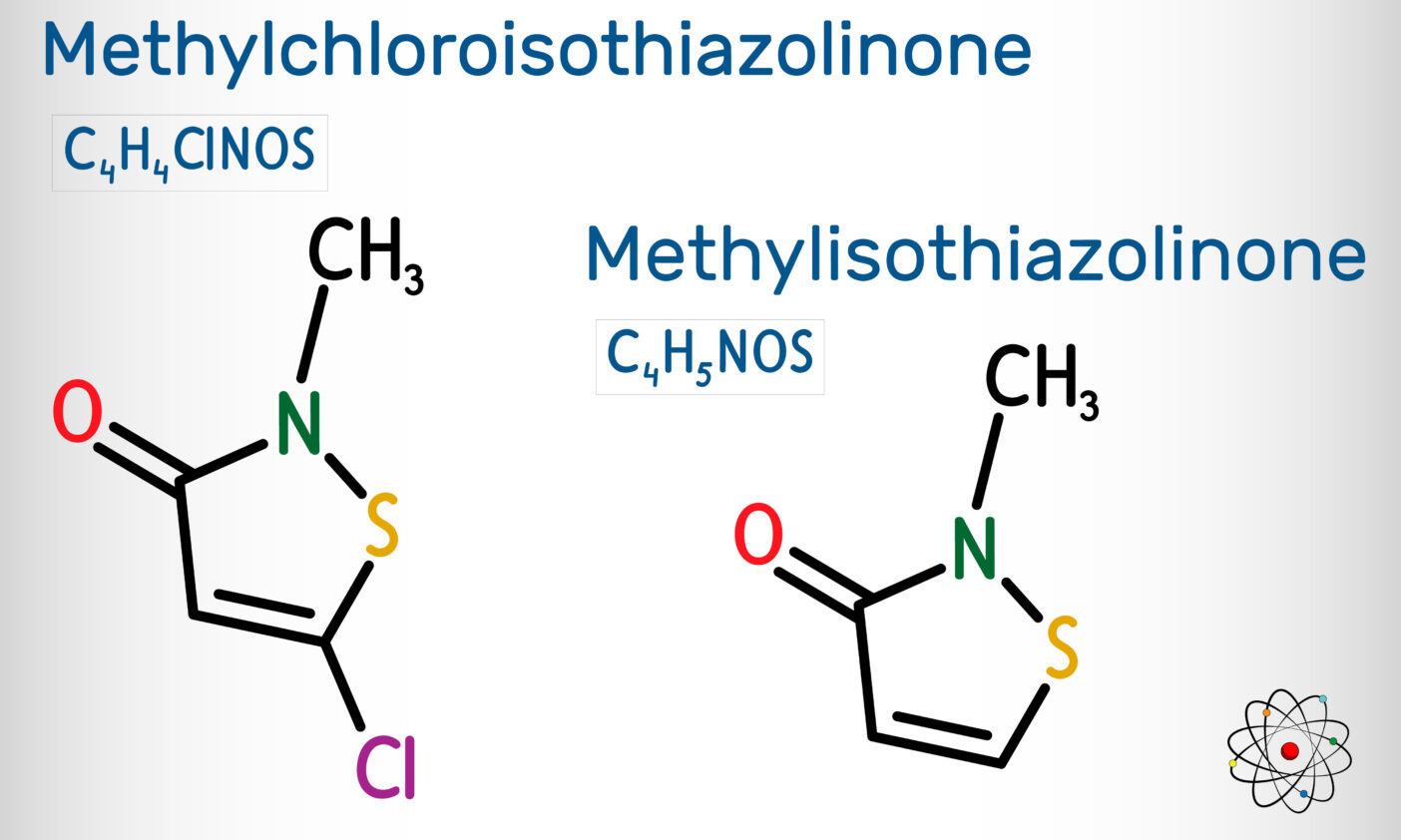Methylisothiazolinone – the hidden allergy trigger

In today’s world, clean surfaces, hygienic floors and sparkling kitchens are a must. But while we enjoy a spotlessly clean home, many cleaning products contain a substance that can be problematic for our health. Methylisothiazolinone, or MIT for short. This preservative has been used in numerous household products for years, despite its alarming allergenic potential.
What is methylisothiazolinone?
Methylisothiazolinone is a chemical preservative used in shampoos, shower gels, lotions, household cleaners, detergents, paints and varnishes. It belongs to the group of isothiazolinones and is very effective at preventing the growth of bacteria, yeast and mould. However, the price for this effectiveness can be high: contact allergies, skin rashes and eczema are not uncommon.
Regulation in cosmetics, but not in household products
Due to the high number of contact allergies caused by methylisothiazolinone, the European Union has already enacted strict rules for its use in cosmetic products. Since 2017, MIT has been banned from leave-on products (e.g. creams) and may only be used in very low concentrations in rinse-off products (e.g. shampoos).
However, one major problem remains: methylisothiazolinone is still widely used in household cleaners, fabric softeners, laundry fragrances and other cleaning products. Here, the substance is not subject to strict cosmetic regulations – and this is precisely what poses a growing health risk.
Why is methylisothiazolinone so problematic?
The substance has a high allergenic potential. Even the smallest amounts absorbed through the skin or inhaled can cause contact dermatitis in people with sensitive skin or existing allergies. Cleaning staff and people who come into regular contact with cleaning products are particularly at risk.
Cost pressure as a driving factor
One of the main reasons why many manufacturers continue to use methylisothiazolinone despite the known risks is its price. MIT is inexpensive, easy to process and very effective – ideal for an industry under high cost pressure. While high-quality preservation systems are safer but more expensive, many suppliers continue to use these ‘cheap preservatives’. The result is a steadily growing number of allergy sufferers.
Keep your eyes open when buying cleaning products!
Consumers should always check the list of ingredients. Methylisothiazolinone is often hidden behind the names ‘methylisothiazolinone’, “MIT” or in combination with chlorine as ‘methylchloroisothiazolinone’. By avoiding products containing these ingredients, you can significantly reduce the risk of skin reactions.
Facts about methylisothiazolinone
- INCI name: methylisothiazolinone
- CAS number: 2682-20-4
- Molecular formula: C₄H₅NOS
- Appearance: colourless to pale yellow liquid
- Odour: slightly chemical
- Melting point: approx. -25 °C
- Boiling point: approx. 155 °C
- Solubility: highly soluble in water
- Use: preservative in cleaning and care products
- Special feature: highly sensitising, causes allergies on contact with skin
Benzisothiazolinone – the ‘silent companion’ with risks
Another preservative that is often used together with methylisothiazolinone is benzisothiazolinone (BIT for short). It also belongs to the isothiazolinone group and, due to its strong antimicrobial effect, is mainly used in technical products such as paints, varnishes, adhesives, cleaning agents and household chemicals. In combination with MIT, BIT enhances the preservative effect – but here too, the price for this effectiveness can be high.
Benzisothiazolinone is also highly sensitising. This means that it can cause allergic reactions, especially with prolonged or repeated contact. The symptoms are similar to those of MIT allergies: redness, itching, eczema and, in severe cases, chronic skin inflammation. It is particularly critical that many people become sensitised to both substances (MIT and BIT) at the same time. This risk is significantly increased by repeated use of commercially available cleaning products.
Benzisothiazolinone is strictly regulated in cosmetic products in the EU and is only permitted in very low concentrations. However, there is currently no comparable regulation for household products, despite the known health risks.
Our appeal to manufacturers and consumers: The additional use of BIT may seem sensible from a preservation point of view, but it is highly problematic for health. Look out for ingredients such as ‘benzisothiazolinone’ or ‘BIT’ on labels – especially if methylisothiazolinone is already present. If you want to protect your skin, you should avoid products containing this problematic combination.
Conclusion: Health before cheap prices!
Methylisothiazolinone may be inexpensive for manufacturers, but for many consumers it is an allergen with far-reaching consequences. It is high time that the cleaning products industry also takes responsibility and switches to safe alternatives. Until then, consumers should inform themselves, check labels and shop consciously!
Cosmacon tip:
Cosmacon GmbH has been relying on safe, skin-friendly and multifunctional preservation systems in cosmetics development for years. In the cosmetics sector, we always show our customers how cosmetic products can be formulated without allergenic additives. Our expertise in selecting and combining modern, effective and gentle active ingredients is not only good for the skin, but also for the brand image. Put your trust in well-thought-out formulations that will delight your customers rather than irritate them!